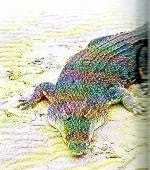pedlery fish ponds
pedlery fish ponds pedlery fish ponds are usually made from the pool wall. this is because the pool walls stronger and more durable. The size of the fish ponds pedlery usually too big. which is about 2 x 1.5 m. For ponds that have no pedlery water source into the water pump is usually used as a means of circulation to keep the fish alive and fresh. Using water circulation pump serves to supply oxygen to the water in the pond. because the oxygen in the pond is relatively small due to the high density and lack of new water turnover. This pedlery pool made not just one but can be 5, 6, 7 or more depending on the needs. the large number of ponds is adjusted to the size and variety of fish species. so each pond is filled with one type of fish and with a certain size. http://hobiikan.blogspot.com/
